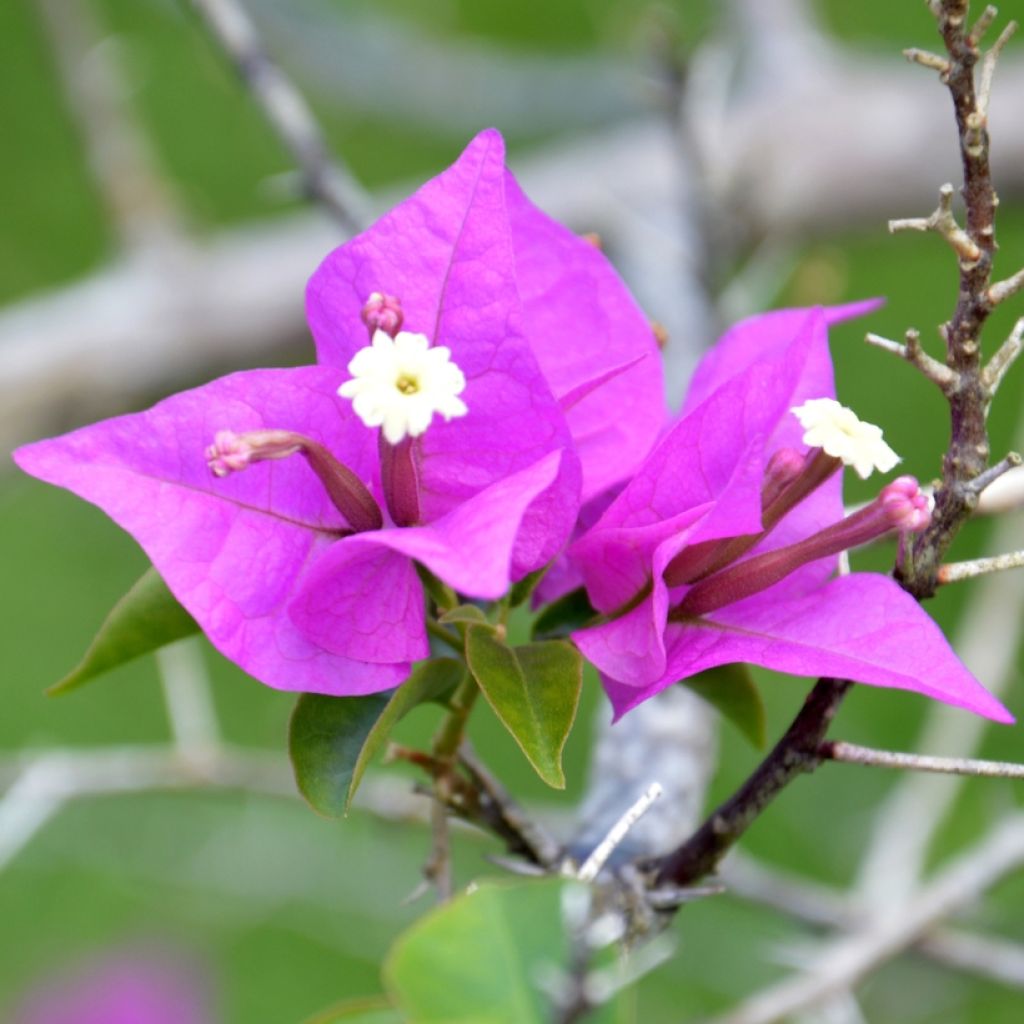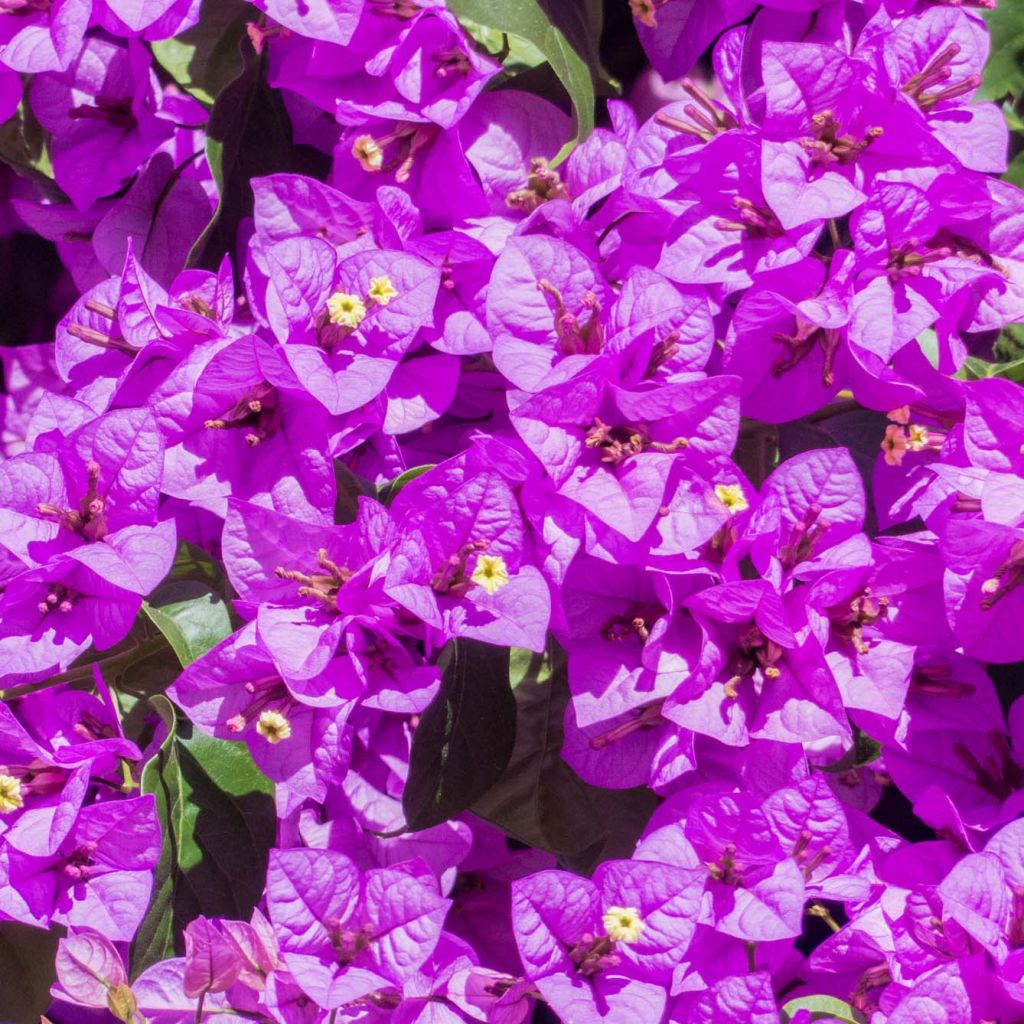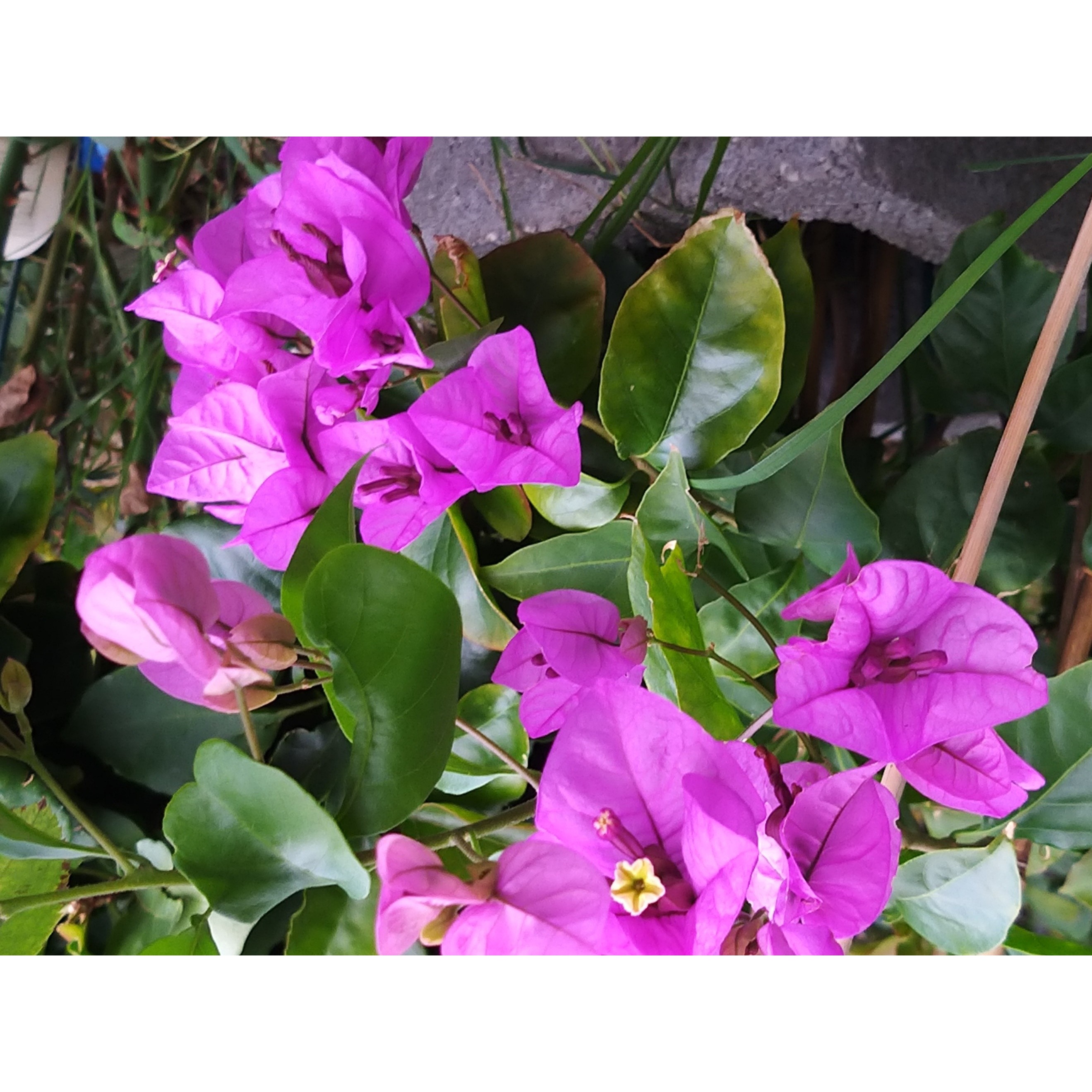

Bougainvillea spectabilis x glabra Violet de Mèze


Bougainvillea spectabilis x glabra Violet de Mèze


Bougainvillea spectabilis x glabra Violet de Mèze


Bougainvillea spectabilis x glabra Violet de Mèze
View more pictures
Hide images

Thierry P.

No text to translate.
Thierry P. • 84 FR

Thierry P.

No text to translate.
Thierry P. • 84 FR

Thierry P.

September flowering - image 4
Thierry P. • 84 FR
Bougainvillea spectabilis x glabra Violet de Mèze
Bougainvillea spectabilis x glabra Violet de mèze
Paper Flower
Good recovery, it is now in flower, I am very happy and I look forward to seeing it a bit bigger next year.
Vero, 30/09/2025
Special offer!
Receive a €20 voucher for any order over €90 (excluding delivery costs, credit notes, and plastic-free options)!
1- Add your favorite plants to your cart.
2- Once you have reached €90, confirm your order (you can even choose the delivery date!).
3- As soon as your order is shipped, you will receive an email containing your voucher code, valid for 3 months (90 days).
Your voucher is unique and can only be used once, for any order with a minimum value of €20, excluding delivery costs.
Can be combined with other current offers, non-divisible and non-refundable.
Home or relay delivery (depending on size and destination)
Schedule delivery date,
and select date in basket
This plant carries a 6 months recovery warranty
More information
We guarantee the quality of our plants for a full growing cycle, and will replace at our expense any plant that fails to recover under normal climatic and planting conditions.
Would this plant suit my garden?
Set up your Plantfit profile →
Description
Bougainvillea Violet de Mèze, like all bougainvilleas, is a climbing plant of Mediterranean coasts but also of the Atlantic coast of Spain and Portugal, areas where the sun reigns supreme and is always spared from frost. This French cultivar, obtained in Hérault, stands out for its better hardiness, which allows it to be planted directly in the ground in slightly less mild regions. It is also loved for the magnificent spectacle of its brilliant flowering, which actually consists of beautiful small heart-shaped floral bracts, of an intense and luminous violet color, surrounding a rather insignificant tiny flower. Gardeners in cooler continental climates should cultivate it in a large pot, storing it indoors in a cool and bright place during the winter, keeping it frost-free.
Bougainvillea spectroglabra Violet de Mèze, belongs to the family Nyctaginaceae, just like Mirabilis jalapa. This plant is one of the many horticultural hybrids resulting from the cross-breeding of B. Spectabilis and B. glabra, both native to the tropical forests of Brazil.
'Violet de Mèze' is a selection from the Cannebeth horticultural company located in Mèze. It is a shrub with rapid growth, whose long branches cling to their support through woody and hooked spines. Under good conditions, the plant will reach a height of 5m (16ft) with a spread of 2m (7ft), dimensions that will remain more modest if it is cultivated in a pot. The long flexible branches bear leaves that are more or less evergreen depending on the severity of the winter. They are entire, ovate to lanceolate, with a cordate base, more or less villous, with a slightly soft texture and a bright medium green color. The flowers bloom from May to September on 2-year-old branches. Grouped in panicles, they are white, tubular, and small. It is the bracts that surround them, of modest size in this variety but beautifully coloured in mauve-violet, that catch the eye from a distance. Their delicate and crinkled texture is reminiscent of tissue paper.
Bougainvillea Violet de Mèze transports the gardener, through the luxuriance of its flowering in extraordinary floral rockets, to distant horizons, and vigorously covers anywhere it likes, for exmple, a pergola, a large trellis, or even an entire south-facing facade of the house. It will truly thrive in mild climates, both very sunny and spared from heavy frosts. Growing it in pots is entirely possible, allowing it to be displayed on a patio or balcony throughout the summer season.
Report an error about the product description
Bougainvillea spectabilis x glabra Violet de Mèze in pictures




Plant habit
Flowering
Foliage
Botanical data
Bougainvillea
spectabilis x glabra
Violet de mèze
Nyctaginaceae
Paper Flower
Cultivar or hybrid
Other Bougainvillea
View all →Planting and care
Plant Bougainvillea in open ground: in spring, after the last frost.
Whether in a pot or in open ground, Bougainvillea requires maximum sunlight, a light, well-drained soil without excess limestone. The optimum pH is between 5.5 and 6.5. During planting, in spring, we recommend mixing two-thirds compost with one-third garden soil. Bougainvillea is a plant that prefers drier soil and can tolerate drought once well established. A less watered Bougainvillea will have more flowers, but its growth will be slower. Water regularly during the growing season. Allow the soil to dry between waterings. In winter, reduce the frequency of watering.
Feeding is not absolutely necessary, except in depleted soil. During the growing and flowering season, generally from spring to the end of summer, you can apply a fertiliser (low in nitrogen). We recommend a base fertiliser with 1N (nitrogen unit), 0.75 P (phosphorus unit), 2.5 K (potassium unit). Stop feeding during the vegetative rest period, in winter.
Bougainvillea can be trained according to your preferences. As groundcover, let nature take its course. This bush requires support to climb. You can train it on a trellis fixed to a wall or an arch, by regularly winding the young, thin and flexible shoots around the support. Use flexible, non-metallic ties to attach the branches. Be careful, some varieties have very thorny stems!
Prune sparingly: pruning should be done in late winter, when the plant starts growing again. It should be light to not hinder the plant's growth. It is preferable to bend the branches horizontally or towards the ground. This technique effectively stimulates branching.
Pot planting for indoor use:
For most varieties, it is preferable to plant them in pots so that they can be brought indoors before autumn, to protect them from the cold. In a pot, you can keep your plant on a veranda,or in a window. Choose a quality, light and fibrous potting soil, rich in turf. Water regularly during the growing season and apply a fertiliser with 1N (nitrogen unit), 0.75 P (phosphorus unit), 2.5 K (potassium unit). Allow the soil to dry between waterings. In winter, reduce the frequency of watering and stop feeding.
Planting period
Intended location
Care
-
, onOrder confirmed
Reply from on Promesse de fleurs
Similar products
Haven't found what you were looking for?
Hardiness is the lowest winter temperature a plant can endure without suffering serious damage or even dying. However, hardiness is affected by location (a sheltered area, such as a patio), protection (winter cover) and soil type (hardiness is improved by well-drained soil).

Photo Sharing Terms & Conditions
In order to encourage gardeners to interact and share their experiences, Promesse de fleurs offers various media enabling content to be uploaded onto its Site - in particular via the ‘Photo sharing’ module.
The User agrees to refrain from:
- Posting any content that is illegal, prejudicial, insulting, racist, inciteful to hatred, revisionist, contrary to public decency, that infringes on privacy or on the privacy rights of third parties, in particular the publicity rights of persons and goods, intellectual property rights, or the right to privacy.
- Submitting content on behalf of a third party;
- Impersonate the identity of a third party and/or publish any personal information about a third party;
In general, the User undertakes to refrain from any unethical behaviour.
All Content (in particular text, comments, files, images, photos, videos, creative works, etc.), which may be subject to property or intellectual property rights, image or other private rights, shall remain the property of the User, subject to the limited rights granted by the terms of the licence granted by Promesse de fleurs as stated below. Users are at liberty to publish or not to publish such Content on the Site, notably via the ‘Photo Sharing’ facility, and accept that this Content shall be made public and freely accessible, notably on the Internet.
Users further acknowledge, undertake to have ,and guarantee that they hold all necessary rights and permissions to publish such material on the Site, in particular with regard to the legislation in force pertaining to any privacy, property, intellectual property, image, or contractual rights, or rights of any other nature. By publishing such Content on the Site, Users acknowledge accepting full liability as publishers of the Content within the meaning of the law, and grant Promesse de fleurs, free of charge, an inclusive, worldwide licence for the said Content for the entire duration of its publication, including all reproduction, representation, up/downloading, displaying, performing, transmission, and storage rights.
Users also grant permission for their name to be linked to the Content and accept that this link may not always be made available.
By engaging in posting material, Users consent to their Content becoming automatically accessible on the Internet, in particular on other sites and/or blogs and/or web pages of the Promesse de fleurs site, including in particular social pages and the Promesse de fleurs catalogue.
Users may secure the removal of entrusted content free of charge by issuing a simple request via our contact form.
The flowering period indicated on our website applies to countries and regions located in USDA zone 8 (France, the United Kingdom, Ireland, the Netherlands, etc.)
It will vary according to where you live:
- In zones 9 to 10 (Italy, Spain, Greece, etc.), flowering will occur about 2 to 4 weeks earlier.
- In zones 6 to 7 (Germany, Poland, Slovenia, and lower mountainous regions), flowering will be delayed by 2 to 3 weeks.
- In zone 5 (Central Europe, Scandinavia), blooming will be delayed by 3 to 5 weeks.
In temperate climates, pruning of spring-flowering shrubs (forsythia, spireas, etc.) should be done just after flowering.
Pruning of summer-flowering shrubs (Indian Lilac, Perovskia, etc.) can be done in winter or spring.
In cold regions as well as with frost-sensitive plants, avoid pruning too early when severe frosts may still occur.
The planting period indicated on our website applies to countries and regions located in USDA zone 8 (France, United Kingdom, Ireland, Netherlands).
It will vary according to where you live:
- In Mediterranean zones (Marseille, Madrid, Milan, etc.), autumn and winter are the best planting periods.
- In continental zones (Strasbourg, Munich, Vienna, etc.), delay planting by 2 to 3 weeks in spring and bring it forward by 2 to 4 weeks in autumn.
- In mountainous regions (the Alps, Pyrenees, Carpathians, etc.), it is best to plant in late spring (May-June) or late summer (August-September).
The harvesting period indicated on our website applies to countries and regions in USDA zone 8 (France, England, Ireland, the Netherlands).
In colder areas (Scandinavia, Poland, Austria...) fruit and vegetable harvests are likely to be delayed by 3-4 weeks.
In warmer areas (Italy, Spain, Greece, etc.), harvesting will probably take place earlier, depending on weather conditions.
The sowing periods indicated on our website apply to countries and regions within USDA Zone 8 (France, UK, Ireland, Netherlands).
In colder areas (Scandinavia, Poland, Austria...), delay any outdoor sowing by 3-4 weeks, or sow under glass.
In warmer climes (Italy, Spain, Greece, etc.), bring outdoor sowing forward by a few weeks.











































